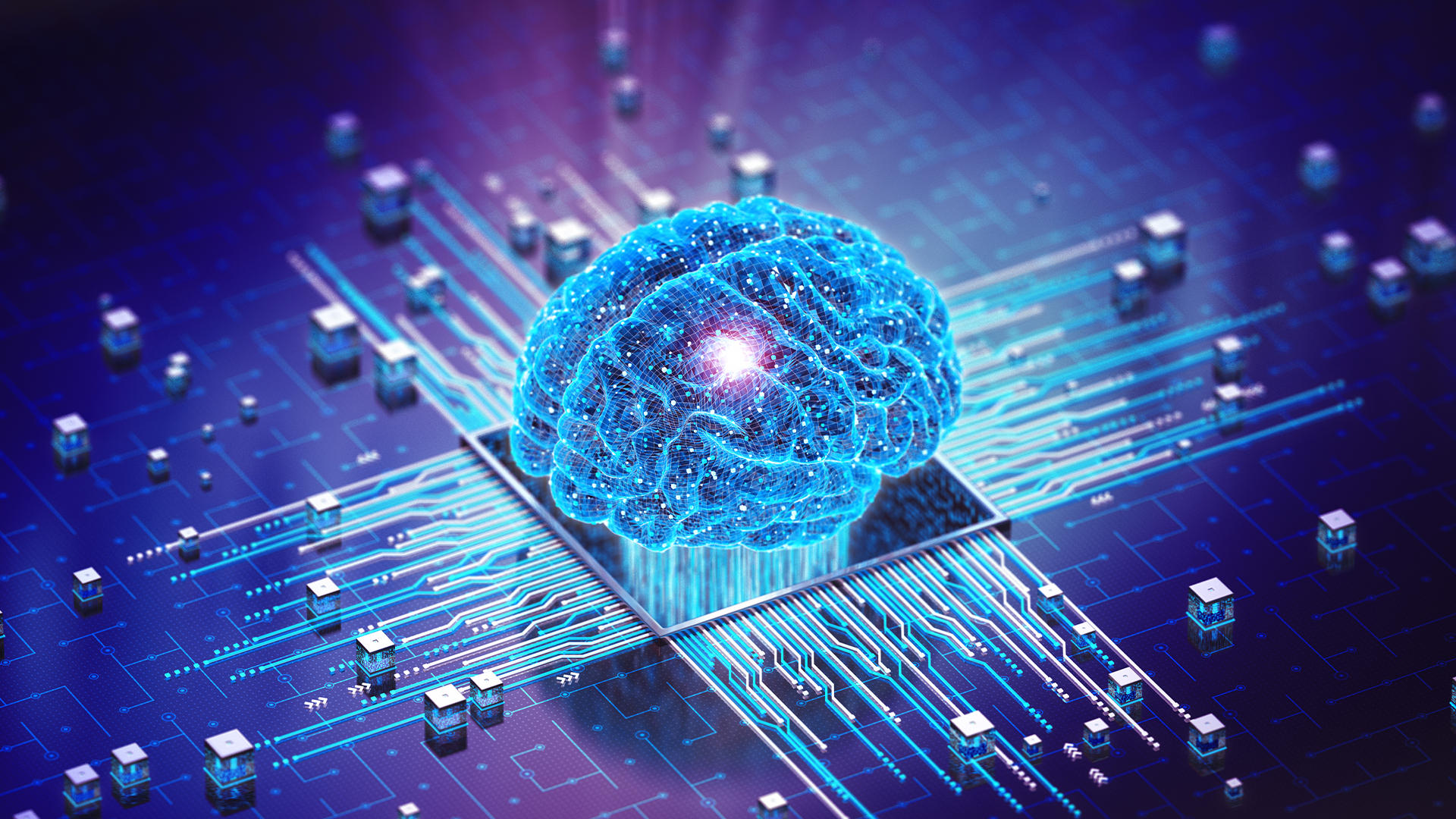Artificial intelligence algorithms require big amounts of data. The strategies utilized to obtain this information have raised issues about privacy, security and copyright.

AI-powered gadgets and services, such as virtual assistants and IoT items, continuously gather personal details, raising concerns about intrusive information gathering and unapproved gain access to by third celebrations. The loss of personal privacy is more worsened by AI's ability to process and combine huge amounts of information, possibly leading to a monitoring society where specific activities are continuously monitored and examined without sufficient safeguards or openness.

Sensitive user information gathered might include online activity records, geolocation information, video, or audio. [204] For example, in order to build speech recognition algorithms, Amazon has taped millions of private discussions and allowed short-lived employees to listen to and transcribe some of them. [205] Opinions about this widespread surveillance range from those who see it as an essential evil to those for whom it is plainly unethical and an offense of the right to personal privacy. [206]
AI developers argue that this is the only method to provide valuable applications and have actually established several techniques that try to maintain privacy while still obtaining the information, such as information aggregation, de-identification and differential personal privacy. [207] Since 2016, some privacy specialists, such as Cynthia Dwork, have started to see privacy in regards to fairness. Brian Christian wrote that professionals have pivoted "from the question of 'what they know' to the concern of 'what they're making with it'." [208]
Generative AI is frequently trained on unlicensed copyrighted works, consisting of in domains such as images or computer system code; the output is then utilized under the reasoning of "fair use". Experts disagree about how well and under what scenarios this rationale will hold up in courts of law; pertinent elements might include "the purpose and character of making use of the copyrighted work" and "the effect upon the possible market for the copyrighted work". [209] [210] Website owners who do not want to have their material scraped can suggest it in a "robots.txt" file. [211] In 2023, leading authors (including John Grisham and Jonathan Franzen) took legal action against AI companies for utilizing their work to train generative AI. [212] [213] Another talked about technique is to imagine a different sui generis system of protection for developments created by AI to ensure fair attribution and payment for human authors. [214]
Dominance by tech giants

The industrial AI scene is controlled by Big Tech business such as Alphabet Inc., Amazon, Apple Inc., Meta Platforms, and Microsoft. [215] [216] [217] Some of these gamers already own the large bulk of existing cloud infrastructure and computing power from data centers, permitting them to entrench even more in the marketplace. [218] [219]
Power requires and environmental effects

In January 2024, the International Energy Agency (IEA) released Electricity 2024, Analysis and Forecast to 2026, forecasting electric power use. [220] This is the very first IEA report to make projections for information centers and power consumption for artificial intelligence and cryptocurrency. The report states that power demand for these uses might double by 2026, with extra electrical power use equivalent to electrical energy utilized by the entire Japanese country. [221]
Prodigious power usage by AI is accountable for the growth of nonrenewable fuel sources utilize, and might delay closings of obsolete, carbon-emitting coal energy centers. There is a feverish rise in the building of information centers throughout the US, making big technology companies (e.g., Microsoft, Meta, Google, raovatonline.org Amazon) into voracious consumers of electrical power. Projected electrical consumption is so immense that there is concern that it will be satisfied no matter the source. A ChatGPT search involves the use of 10 times the electrical energy as a Google search. The large firms remain in haste to find source of power - from nuclear energy to geothermal to combination. The tech companies argue that - in the viewpoint - AI will be ultimately kinder to the environment, however they require the energy now. AI makes the power grid more efficient and "smart", will assist in the development of nuclear power, and track total carbon emissions, according to technology companies. [222]
A 2024 Goldman Sachs Term Paper, AI Data Centers and the Coming US Power Demand Surge, found "US power need (is) likely to experience growth not seen in a generation ..." and projections that, by 2030, US information centers will consume 8% of US power, as opposed to 3% in 2022, presaging growth for the electrical power generation market by a variety of means. [223] Data centers' requirement for more and more electrical power is such that they may max out the electrical grid. The Big Tech business counter that AI can be used to take full advantage of the usage of the grid by all. [224]
In 2024, the Wall Street Journal reported that big AI business have begun settlements with the US nuclear power providers to offer electrical energy to the data centers. In March 2024 Amazon bought a Pennsylvania nuclear-powered data center for $650 Million (US). [225] Nvidia CEO Jen-Hsun Huang said nuclear power is a great choice for the data centers. [226]
In September 2024, Microsoft revealed an arrangement with Constellation Energy to re-open the Three Mile Island nuclear power plant to offer Microsoft with 100% of all electric power produced by the plant for 20 years. Reopening the plant, which suffered a partial nuclear meltdown of its Unit 2 reactor in 1979, will need Constellation to get through stringent regulative procedures which will include comprehensive safety analysis from the US Nuclear Regulatory Commission. If authorized (this will be the very first US re-commissioning of a nuclear plant), over 835 megawatts of power - enough for 800,000 homes - of energy will be produced. The expense for re-opening and updating is approximated at $1.6 billion (US) and depends on tax breaks for nuclear power contained in the 2022 US Inflation Reduction Act. [227] The US federal government and wavedream.wiki the state of Michigan are investing practically $2 billion (US) to resume the Palisades Atomic power plant on Lake Michigan. Closed because 2022, the plant is prepared to be resumed in October 2025. The Three Mile Island facility will be renamed the Crane Clean Energy Center after Chris Crane, a nuclear proponent and previous CEO of Exelon who was accountable for Exelon spinoff of Constellation. [228]
After the last approval in September 2023, Taiwan suspended the approval of information centers north of Taoyuan with a capacity of more than 5 MW in 2024, due to power supply shortages. [229] Taiwan aims to phase out nuclear power by 2025. [229] On the other hand, Singapore enforced a restriction on the opening of information centers in 2019 due to electrical power, but in 2022, raised this ban. [229]
Although most nuclear plants in Japan have actually been closed down after the 2011 Fukushima nuclear mishap, according to an October 2024 Bloomberg short article in Japanese, cloud video gaming services company Ubitus, in which Nvidia has a stake, is looking for land in Japan near nuclear reactor for a new information center for generative AI. [230] Ubitus CEO Wesley Kuo said nuclear reactor are the most effective, low-cost and steady power for AI. [230]
On 1 November 2024, the Federal Energy Regulatory Commission (FERC) turned down an application sent by Talen Energy for approval to provide some electricity from the nuclear power station Susquehanna to Amazon's data center. [231] According to the Commission Chairman Willie L. Phillips, it is a concern on the electrical energy grid as well as a considerable cost moving issue to households and other organization sectors. [231]
Misinformation
YouTube, Facebook and others use recommender systems to guide users to more content. These AI programs were given the goal of maximizing user engagement (that is, the only objective was to keep individuals seeing). The AI discovered that users tended to choose false information, forum.batman.gainedge.org conspiracy theories, and severe partisan content, and, to keep them enjoying, the AI suggested more of it. Users likewise tended to watch more content on the same topic, so the AI led individuals into filter bubbles where they got several versions of the exact same false information. [232] This convinced many users that the misinformation was real, and ultimately weakened trust in organizations, the media and the government. [233] The AI program had actually correctly found out to optimize its goal, but the result was damaging to society. After the U.S. election in 2016, major technology business took actions to reduce the issue [citation required]
In 2022, generative AI began to develop images, audio, video and text that are identical from genuine photos, recordings, yewiki.org films, or human writing. It is possible for bad stars to utilize this innovation to create massive quantities of false information or propaganda. [234] AI pioneer Geoffrey Hinton expressed concern about AI making it possible for "authoritarian leaders to control their electorates" on a big scale, amongst other dangers. [235]
Algorithmic predisposition and fairness

Artificial intelligence applications will be biased [k] if they gain from prejudiced information. [237] The designers might not be mindful that the bias exists. [238] Bias can be introduced by the way training data is picked and by the way a design is released. [239] [237] If a biased algorithm is used to make choices that can seriously damage individuals (as it can in medication, financing, recruitment, real estate or policing) then the algorithm may trigger discrimination. [240] The field of fairness research studies how to prevent damages from algorithmic predispositions.

On June 28, 2015, Google Photos's brand-new image labeling function wrongly identified Jacky Alcine and a good friend as "gorillas" because they were black. The system was trained on a dataset that contained extremely couple of pictures of black people, [241] an issue called "sample size disparity". [242] Google "repaired" this issue by avoiding the system from labelling anything as a "gorilla". Eight years later, in 2023, Google Photos still could not determine a gorilla, and neither might similar products from Apple, Facebook, Microsoft and Amazon. [243]
COMPAS is an industrial program extensively used by U.S. courts to assess the likelihood of an offender ending up being a recidivist. In 2016, Julia Angwin at ProPublica found that COMPAS exhibited racial bias, wiki.dulovic.tech despite the truth that the program was not told the races of the defendants. Although the mistake rate for both whites and blacks was adjusted equal at precisely 61%, the errors for each race were different-the system regularly overstated the chance that a black individual would re-offend and would underestimate the possibility that a white individual would not re-offend. [244] In 2017, a number of researchers [l] revealed that it was mathematically impossible for COMPAS to accommodate all possible steps of fairness when the base rates of re-offense were various for whites and blacks in the data. [246]
A program can make biased decisions even if the information does not clearly mention a troublesome function (such as "race" or "gender"). The feature will correlate with other functions (like "address", "shopping history" or "very first name"), and the program will make the same decisions based on these features as it would on "race" or "gender". [247] Moritz Hardt said "the most robust fact in this research study area is that fairness through loss of sight doesn't work." [248]
Criticism of COMPAS highlighted that artificial intelligence models are created to make "forecasts" that are only valid if we assume that the future will look like the past. If they are trained on data that includes the results of racist choices in the past, artificial intelligence models need to forecast that racist choices will be made in the future. If an application then uses these predictions as suggestions, a few of these "recommendations" will likely be racist. [249] Thus, artificial intelligence is not well suited to help make choices in locations where there is hope that the future will be better than the past. It is detailed rather than prescriptive. [m]
Bias and unfairness may go undiscovered since the designers are overwhelmingly white and male: among AI engineers, about 4% are black and 20% are females. [242]
There are different conflicting meanings and mathematical designs of fairness. These ideas depend on ethical presumptions, and are influenced by beliefs about society. One broad category is distributive fairness, which concentrates on the outcomes, typically determining groups and seeking to make up for analytical variations. Representational fairness tries to guarantee that AI systems do not enhance unfavorable stereotypes or render certain groups undetectable. Procedural fairness focuses on the decision process rather than the result. The most appropriate concepts of fairness may depend on the context, significantly the type of AI application and the stakeholders. The subjectivity in the concepts of predisposition and fairness makes it difficult for companies to operationalize them. Having access to delicate attributes such as race or gender is also considered by many AI ethicists to be necessary in order to compensate for biases, however it may contrast with anti-discrimination laws. [236]
At its 2022 Conference on Fairness, Accountability, and Transparency (ACM FAccT 2022), the Association for Computing Machinery, in Seoul, South Korea, provided and published findings that suggest that up until AI and robotics systems are shown to be totally free of bias errors, they are risky, and making use of self-learning neural networks trained on large, unregulated sources of flawed internet information need to be curtailed. [suspicious - go over] [251]
Lack of transparency
Many AI systems are so complicated that their designers can not explain how they reach their choices. [252] Particularly with deep neural networks, in which there are a large quantity of non-linear relationships between inputs and outputs. But some popular explainability techniques exist. [253]
It is difficult to be certain that a program is operating correctly if no one knows how exactly it works. There have been lots of cases where a device finding out program passed strenuous tests, but nevertheless learned something different than what the developers intended. For instance, a system that might recognize skin illness much better than doctor was found to actually have a strong propensity to classify images with a ruler as "cancerous", since pictures of malignancies typically include a ruler to reveal the scale. [254] Another artificial intelligence system created to assist effectively allocate medical resources was discovered to classify clients with asthma as being at "low risk" of passing away from pneumonia. Having asthma is actually a severe threat element, but since the clients having asthma would generally get much more treatment, they were fairly not likely to pass away according to the training data. The correlation in between asthma and low threat of dying from pneumonia was genuine, however misinforming. [255]
People who have been harmed by an algorithm's choice have a right to an explanation. [256] Doctors, for example, are anticipated to plainly and totally explain to their coworkers the thinking behind any decision they make. Early drafts of the European Union's General Data Protection Regulation in 2016 consisted of a specific statement that this ideal exists. [n] Industry experts kept in mind that this is an unsolved problem without any solution in sight. Regulators argued that nonetheless the damage is real: if the issue has no service, the tools should not be utilized. [257]
DARPA developed the XAI ("Explainable Artificial Intelligence") program in 2014 to try to fix these problems. [258]
Several approaches aim to address the transparency problem. SHAP makes it possible for to visualise the contribution of each feature to the output. [259] LIME can locally approximate a model's outputs with a simpler, interpretable design. [260] Multitask knowing supplies a big number of outputs in addition to the target category. These other outputs can help developers deduce what the network has actually learned. [261] Deconvolution, DeepDream and other generative methods can allow developers to see what various layers of a deep network for computer vision have actually discovered, and produce output that can suggest what the network is finding out. [262] For generative pre-trained transformers, Anthropic established a method based upon dictionary learning that associates patterns of neuron activations with human-understandable ideas. [263]
Bad stars and weaponized AI
Expert system supplies a variety of tools that are useful to bad stars, such as authoritarian governments, terrorists, bad guys or rogue states.
A lethal self-governing weapon is a maker that locates, chooses and engages human targets without human guidance. [o] Widely available AI tools can be used by bad stars to establish affordable autonomous weapons and, if produced at scale, they are potentially weapons of mass destruction. [265] Even when used in traditional warfare, they currently can not reliably choose targets and might possibly eliminate an innocent individual. [265] In 2014, 30 countries (including China) supported a restriction on autonomous weapons under the United Nations' Convention on Certain Conventional Weapons, nevertheless the United States and others disagreed. [266] By 2015, over fifty nations were reported to be researching battlefield robotics. [267]
AI tools make it simpler for authoritarian federal governments to efficiently manage their residents in several methods. Face and voice recognition allow prevalent surveillance. Artificial intelligence, running this data, can classify potential enemies of the state and avoid them from hiding. Recommendation systems can exactly target propaganda and misinformation for optimal effect. Deepfakes and generative AI aid in producing misinformation. Advanced AI can make authoritarian central decision making more competitive than liberal and decentralized systems such as markets. It lowers the expense and problem of digital warfare and advanced spyware. [268] All these technologies have actually been available considering that 2020 or earlier-AI facial acknowledgment systems are currently being utilized for mass security in China. [269] [270]
There many other ways that AI is expected to assist bad stars, some of which can not be anticipated. For instance, machine-learning AI has the ability to develop tens of countless harmful molecules in a matter of hours. [271]
Technological unemployment
Economists have actually regularly highlighted the dangers of redundancies from AI, and speculated about joblessness if there is no appropriate social policy for complete employment. [272]
In the past, technology has actually tended to increase instead of minimize overall employment, but economists acknowledge that "we remain in uncharted area" with AI. [273] A study of economists showed dispute about whether the increasing usage of robotics and AI will cause a considerable increase in long-lasting unemployment, however they generally agree that it might be a net benefit if productivity gains are rearranged. [274] Risk price quotes vary; for instance, in the 2010s, Michael Osborne and Carl Benedikt Frey approximated 47% of U.S. tasks are at "high danger" of possible automation, while an OECD report classified only 9% of U.S. tasks as "high risk". [p] [276] The method of speculating about future employment levels has actually been criticised as lacking evidential structure, and for implying that technology, rather than social policy, systemcheck-wiki.de produces joblessness, instead of redundancies. [272] In April 2023, it was reported that 70% of the tasks for Chinese video game illustrators had been removed by generative expert system. [277] [278]
Unlike previous waves of automation, lots of middle-class tasks may be removed by expert system; The Economist specified in 2015 that "the concern that AI might do to white-collar tasks what steam power did to blue-collar ones during the Industrial Revolution" is "worth taking seriously". [279] Jobs at severe risk variety from paralegals to junk food cooks, while task demand is likely to increase for care-related occupations ranging from individual health care to the clergy. [280]
From the early days of the development of expert system, there have been arguments, for example, those put forward by Joseph Weizenbaum, about whether jobs that can be done by computer systems actually need to be done by them, provided the distinction in between computers and people, and between quantitative calculation and qualitative, value-based judgement. [281]
Existential danger
It has actually been argued AI will end up being so powerful that humankind may irreversibly lose control of it. This could, as physicist Stephen Hawking mentioned, "spell the end of the mankind". [282] This scenario has prevailed in sci-fi, when a computer system or robotic unexpectedly develops a human-like "self-awareness" (or "life" or "awareness") and ends up being a malevolent character. [q] These sci-fi situations are misleading in a number of ways.
First, AI does not require human-like life to be an existential danger. Modern AI programs are provided particular goals and utilize learning and intelligence to attain them. Philosopher Nick Bostrom argued that if one offers practically any objective to a sufficiently powerful AI, it may choose to ruin mankind to attain it (he used the example of a paperclip factory supervisor). [284] Stuart Russell gives the example of family robotic that looks for a way to kill its owner to prevent it from being unplugged, reasoning that "you can't bring the coffee if you're dead." [285] In order to be safe for mankind, a superintelligence would need to be truly aligned with humankind's morality and worths so that it is "fundamentally on our side". [286]
Second, Yuval Noah Harari argues that AI does not need a robot body or hb9lc.org physical control to pose an existential danger. The important parts of civilization are not physical. Things like ideologies, law, federal government, money and the economy are developed on language; they exist since there are stories that billions of individuals believe. The present occurrence of misinformation recommends that an AI could use language to convince individuals to believe anything, even to act that are harmful. [287]
The viewpoints among professionals and industry experts are combined, with sizable fractions both worried and unconcerned by threat from eventual superintelligent AI. [288] Personalities such as Stephen Hawking, Bill Gates, and Elon Musk, [289] along with AI pioneers such as Yoshua Bengio, Stuart Russell, Demis Hassabis, and Sam Altman, have expressed concerns about existential risk from AI.
In May 2023, Geoffrey Hinton revealed his resignation from Google in order to have the ability to "freely speak up about the dangers of AI" without "considering how this impacts Google". [290] He especially discussed threats of an AI takeover, [291] and worried that in order to avoid the worst outcomes, developing safety guidelines will require cooperation amongst those competing in use of AI. [292]
In 2023, numerous leading AI professionals backed the joint statement that "Mitigating the risk of termination from AI must be a global top priority along with other societal-scale risks such as pandemics and nuclear war". [293]
Some other scientists were more positive. AI pioneer Jürgen Schmidhuber did not sign the joint declaration, stressing that in 95% of all cases, AI research study has to do with making "human lives longer and healthier and easier." [294] While the tools that are now being used to enhance lives can also be used by bad stars, "they can also be used against the bad actors." [295] [296] Andrew Ng also argued that "it's an error to succumb to the end ofthe world hype on AI-and that regulators who do will only benefit vested interests." [297] Yann LeCun "scoffs at his peers' dystopian circumstances of supercharged false information and even, eventually, human extinction." [298] In the early 2010s, experts argued that the threats are too far-off in the future to necessitate research or that humans will be important from the perspective of a superintelligent machine. [299] However, after 2016, the research study of present and future dangers and possible solutions became a severe area of research. [300]
Ethical machines and positioning
Friendly AI are machines that have actually been created from the starting to reduce risks and to make options that benefit humans. Eliezer Yudkowsky, who created the term, argues that establishing friendly AI must be a greater research top priority: it may require a large financial investment and it must be completed before AI becomes an existential threat. [301]
Machines with intelligence have the potential to utilize their intelligence to make ethical choices. The field of maker ethics provides machines with ethical principles and treatments for fixing ethical issues. [302] The field of maker principles is also called computational morality, [302] and was founded at an AAAI seminar in 2005. [303]
Other techniques include Wendell Wallach's "artificial ethical representatives" [304] and Stuart J. Russell's 3 principles for developing provably useful devices. [305]
Open source
Active organizations in the AI open-source neighborhood consist of Hugging Face, [306] Google, [307] EleutherAI and Meta. [308] Various AI models, such as Llama 2, Mistral or Stable Diffusion, have been made open-weight, [309] [310] implying that their architecture and trained specifications (the "weights") are publicly available. Open-weight models can be easily fine-tuned, which permits business to specialize them with their own information and for their own use-case. [311] Open-weight models are beneficial for research and innovation but can also be misused. Since they can be fine-tuned, any integrated security step, such as objecting to harmful demands, can be trained away till it becomes ineffective. Some scientists warn that future AI designs might develop hazardous abilities (such as the potential to drastically help with bioterrorism) and that once launched on the Internet, they can not be deleted all over if needed. They suggest pre-release audits and cost-benefit analyses. [312]
Frameworks

Expert system projects can have their ethical permissibility tested while creating, developing, and implementing an AI system. An AI framework such as the Care and Act Framework containing the SUM values-developed by the Alan Turing Institute checks projects in 4 main locations: [313] [314]
Respect the dignity of individual individuals
Get in touch with other individuals regards, honestly, and inclusively
Care for the health and wellbeing of everybody
Protect social values, justice, and the public interest
Other developments in ethical frameworks consist of those picked during the Asilomar Conference, the Montreal Declaration for Responsible AI, and the IEEE's Ethics of Autonomous Systems effort, among others; [315] however, these principles do not go without their criticisms, especially concerns to the individuals chosen adds to these frameworks. [316]
Promotion of the wellbeing of individuals and neighborhoods that these technologies impact needs consideration of the social and ethical implications at all stages of AI system design, development and application, and collaboration between task roles such as information researchers, item supervisors, data engineers, domain specialists, and delivery managers. [317]
The UK AI Safety Institute released in 2024 a testing toolset called 'Inspect' for AI safety examinations available under a MIT open-source licence which is easily available on GitHub and can be improved with third-party plans. It can be utilized to evaluate AI models in a series of locations including core understanding, capability to factor, and autonomous capabilities. [318]
Regulation
The regulation of expert system is the advancement of public sector policies and laws for promoting and regulating AI; it is for that reason associated to the wider regulation of algorithms. [319] The regulative and policy landscape for AI is an emerging concern in jurisdictions worldwide. [320] According to AI Index at Stanford, the yearly variety of AI-related laws passed in the 127 survey nations leapt from one passed in 2016 to 37 passed in 2022 alone. [321] [322] Between 2016 and 2020, more than 30 nations adopted dedicated techniques for AI. [323] Most EU member states had actually released nationwide AI techniques, as had Canada, China, India, Japan, Mauritius, the Russian Federation, Saudi Arabia, United Arab Emirates, U.S., and Vietnam. Others remained in the process of elaborating their own AI technique, including Bangladesh, Malaysia and Tunisia. [323] The Global Partnership on Artificial Intelligence was launched in June 2020, specifying a requirement for AI to be established in accordance with human rights and democratic worths, to make sure public self-confidence and trust in the innovation. [323] Henry Kissinger, Eric Schmidt, and Daniel Huttenlocher published a joint statement in November 2021 calling for a government commission to regulate AI. [324] In 2023, OpenAI leaders released recommendations for the governance of superintelligence, which they think may take place in less than 10 years. [325] In 2023, the United Nations likewise released an advisory body to provide recommendations on AI governance; the body consists of innovation company executives, federal governments officials and academics. [326] In 2024, the Council of Europe developed the first global legally binding treaty on AI, called the "Framework Convention on Artificial Intelligence and Human Rights, Democracy and the Rule of Law".








